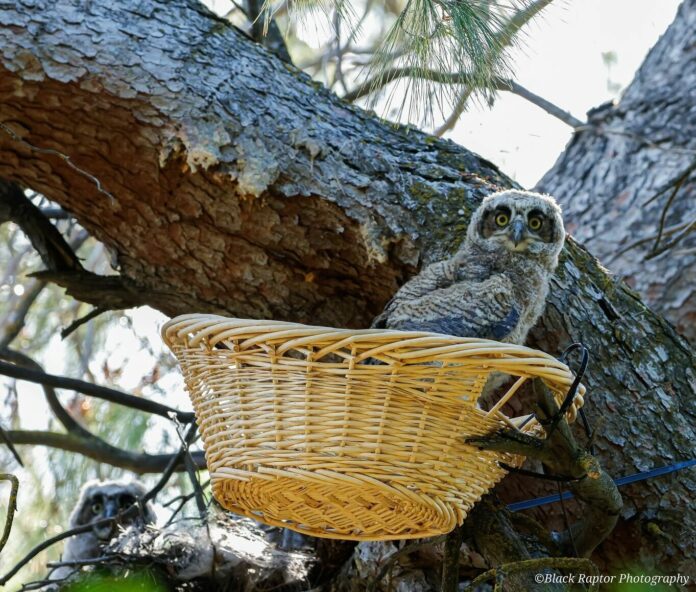The city is partnering with the California Raptor Center to help return a baby owl to its nest
By ALMA CULVERWELL — city@theaggie.org
The city and California Raptor Center recently helped with the renesting of an injured Great Horned Owlet who was displaced from its family by installing a wicker basket to serve as a more stable nest and new habitat for the owls in the area. The city of Davis has been assisting with the rehabilitation of bird species in collaboration with the California Raptor Center for the past 20 years. They assist with a wide range of species from Red-Tailed Hawks to Burrowing Owls.
Julie Cotton, the Raptor Center’s operations supervisor, described the rehabilitation process for the owlet that the center recently helped back to safety.
“This particular owlet was found by a local family along the Putah Creek bike path in South Davis,” Cotton said. “It appeared to have taken a fall from its nest before it was ready to fledge. That is, before it was ready to leave the nest and fly. The family realized the owlet could be injured and was in danger in an area with so much foot traffic, so they brought it to the California Raptor Center.”
Cotton talked about the importance of owlets being raised by their parents and the process of reuniting them.
“We found that the owlet was uninjured, and our goal immediately became to reunite it with its family,” Cotton said. “Years of our own experiences and the experiences of other wildlife rehabilitators have shown that Great Horned Owl chicks do best when raised by their own parents or foster parents of the same species. One way to reunite them is to ‘renest’ them, which means returning them to their original nest or providing a substitute nest nearby.”
The Raptor Center was able to achieve this by working with City of Davis Wildlife Resource Specialist John McNerney. McNerny explained the actions he took in order to rescue the owlet.
“The owlet was transported in a top-loading pet carrier, similar to the ones used to carry a cat or other small pet,” McNerny said. “… I took the owlet up in the lift truck and carefully approached the nest site. Caution was necessary to prevent the sibling owlet from fleeing the nest. The wicker basket was attached to the nest tree approximately one meter from the original nest using plastic zip ties. The owlet was then extracted from the carrier and gently placed in a wicker basket. Finally, I quickly lowered away from the nest so the owlet could relax and settle in. Everything went smoothly and the operations supervisor reported that the parents resumed caring for the renested owlet that evening.”
According to Julie Cotton, Great Horned Owls are the third most common species treated at the Raptor Center and many are brought in each year. In order to better protect these species, McNerney and Cotton recommend avoiding the use of rodenticides, avoiding trimming trees in spring and summer months and calling a wildlife center before picking up a baby owl on the ground.
Written By: Alma Culverwell — city@theaggie.org




